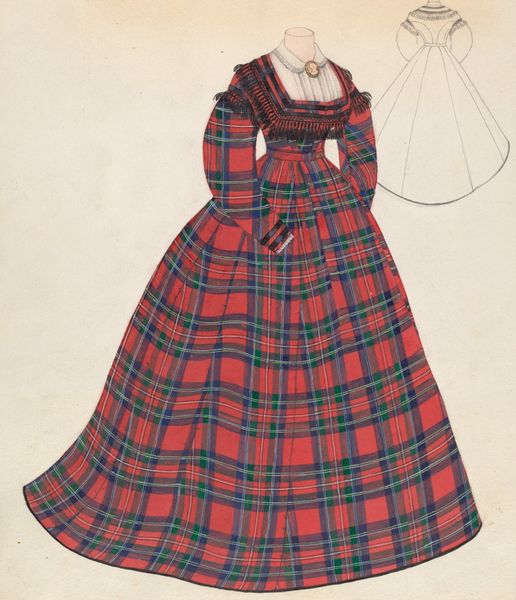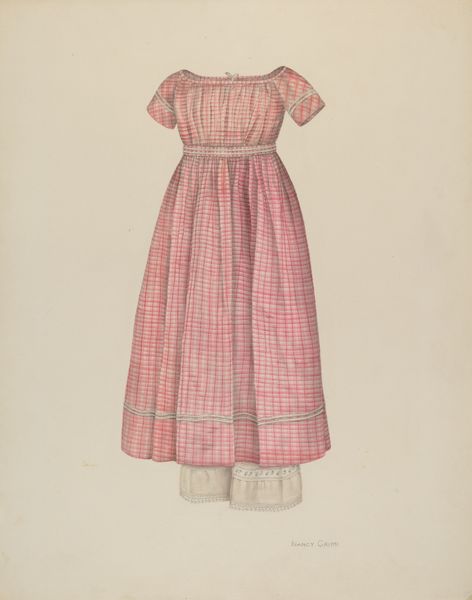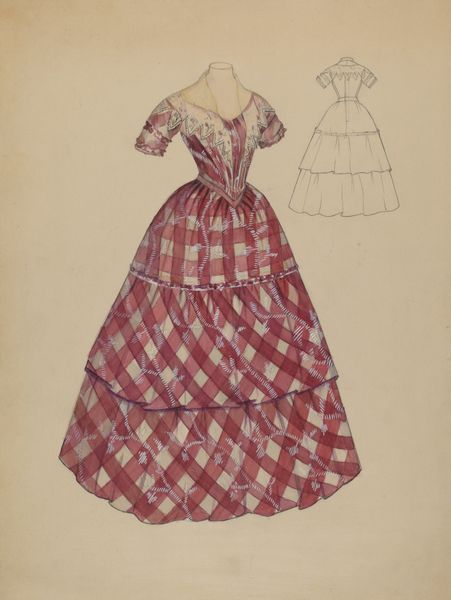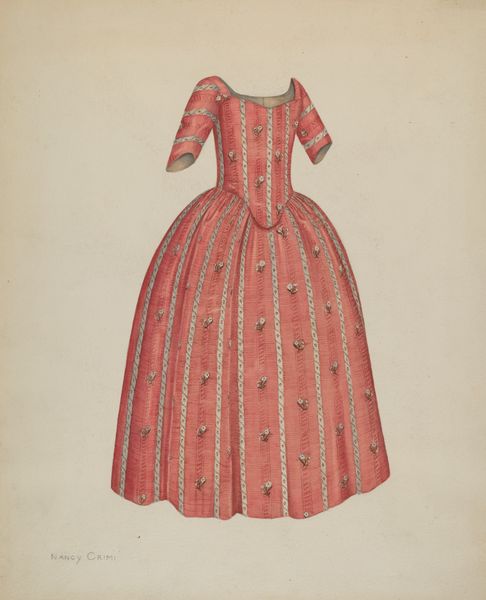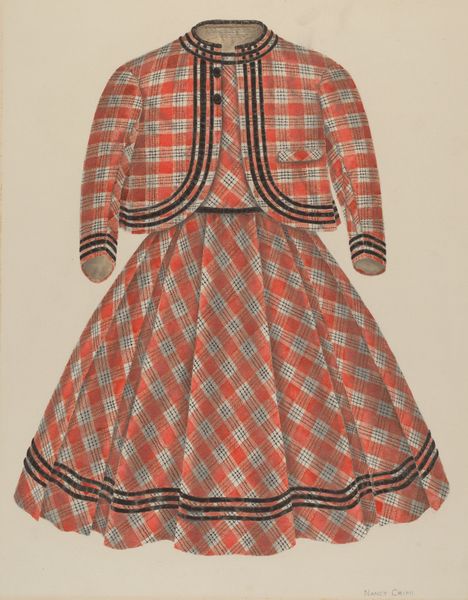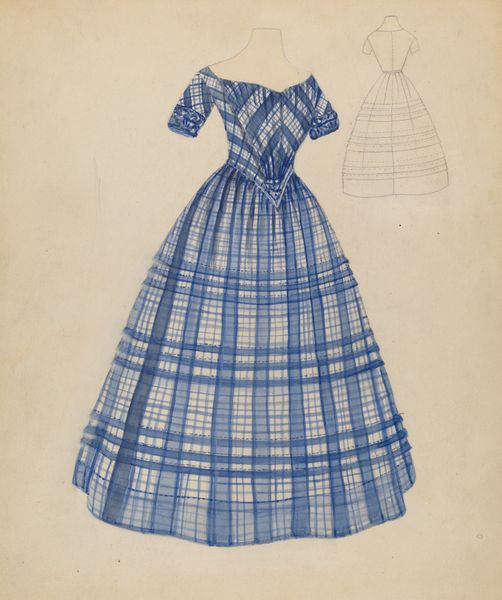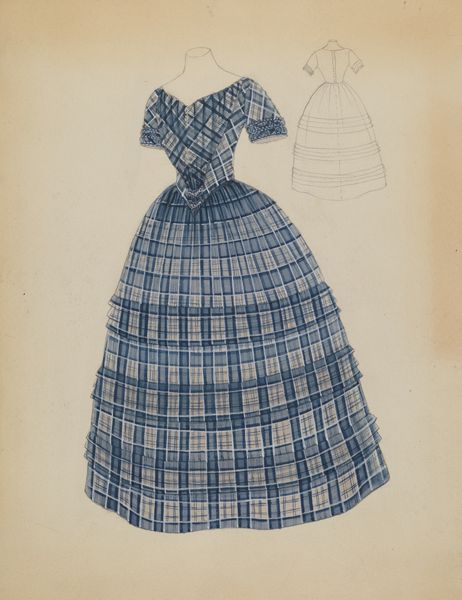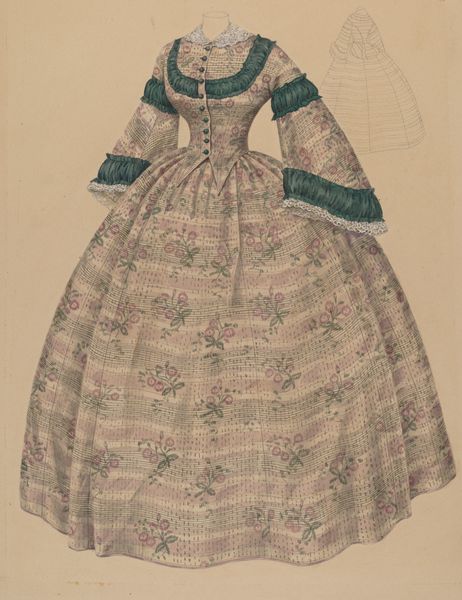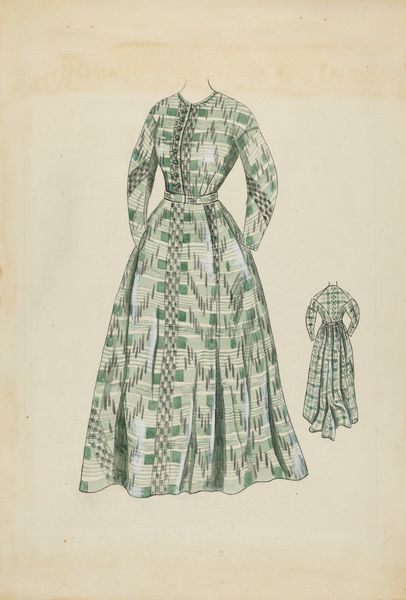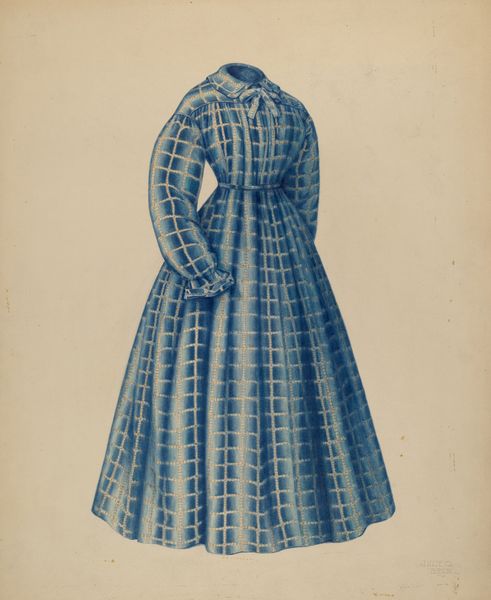
Dimensions: overall: 44.5 x 37.3 cm (17 1/2 x 14 11/16 in.)
Copyright: National Gallery of Art: CC0 1.0
Curator: This vibrant piece is a drawing titled "Dress," created around 1936 by Hedwig Emanuel. It appears to be rendered in pencil and gives us a vivid peek into fashion design of the era. Editor: The immediate impact is the boldness of that plaid! It's a striking choice, especially with the fringe detailing around the shoulders. There's something inherently Scottish about it, wouldn't you agree? Curator: Absolutely. Tartan plaids have historically represented clan affiliations, a clear marker of identity and belonging. I see that repeated boldness, that strong statement, echoing across socio-political movements from the 18th century to even punk rock in the 20th! The act of adorning oneself in this pattern became a political statement, either asserting lineage, or actively disrupting the status quo. Editor: I'm curious about its relationship to romanticism. This rendering has such a gentle quality; but plaid often appears quite assertive, even confrontational. Can these qualities coexist here? Curator: I think so. Romanticism wasn't merely about soft aesthetics, but it prioritized feeling, experience and imagination over rationality, celebrating folk culture and unique emotional expression. The bold plaid might signify a reclamation of cultural heritage or a distinct individual identity which, at that time, challenged prevailing fashions and expectations. Look closely and see how those vertical and horizontal lines meet - isn't there something beautiful there? Editor: There's something subtly subversive here; that fringe trim combined with a rather formal, square neckline feels like it’s challenging Victorian norms of decorum while outwardly adopting their visual vocabulary. Curator: Precisely. Clothing always speaks, whether it’s whispering a quiet secret, or declaring a rebellion! Editor: The ghostly silhouette to the side seems like an incomplete under-drawing or perhaps an alternative take; it gives insight into Emanuel’s design process – how her creativity took shape, layer by layer. Thank you for those cultural layers that help decode that shape! Curator: Thank you for joining me; it always fascinating how an image meant only for beauty might contain centuries of expression and even conflict within its pattern and silhouette.
Comments
No comments
Be the first to comment and join the conversation on the ultimate creative platform.
